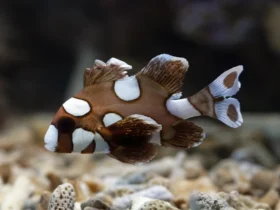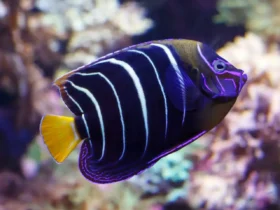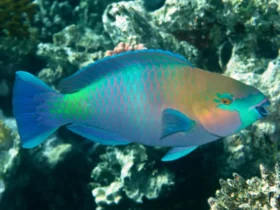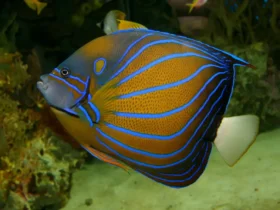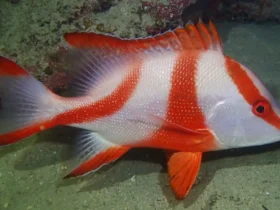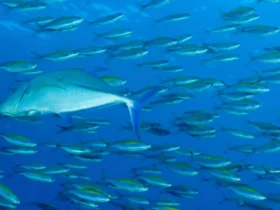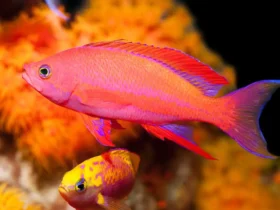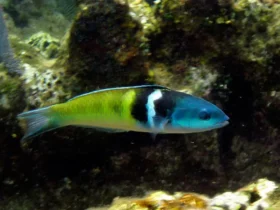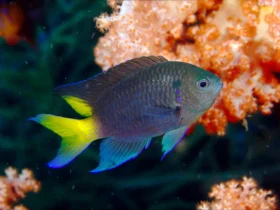In the captivating world of freshwater aquariums, few fish can match the stunning beauty and colorful display of the Peacock Gudgeon. With its vibrant hues, intricate patterning, and charming behavior, this small and peaceful fish adds a touch of elegance to any aquatic environment. In this article, we will explore the enchanting world of the Peacock Gudgeon, delving into its appearance, habitat, care requirements, and the joy it brings to aquarium enthusiasts.
Peacock Gudgeon images
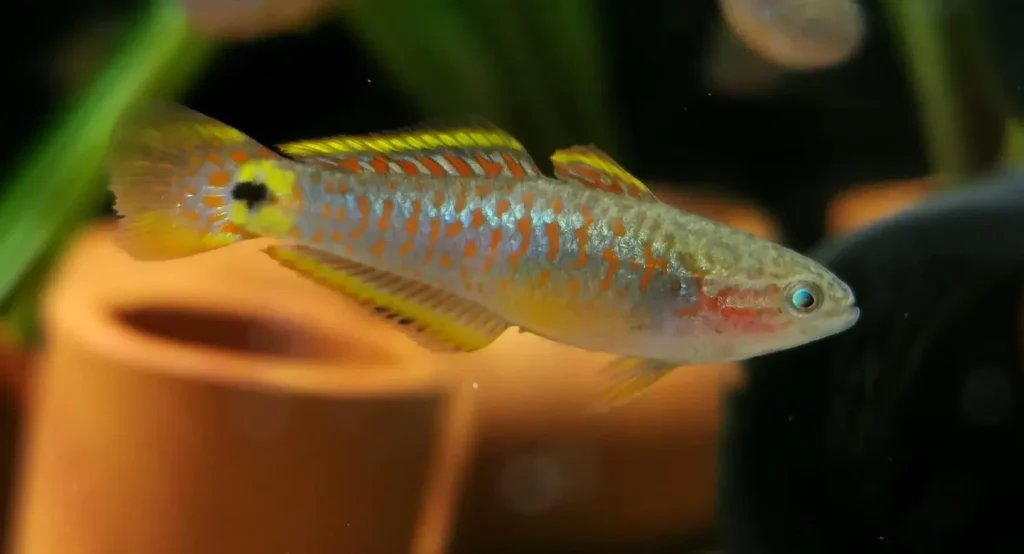
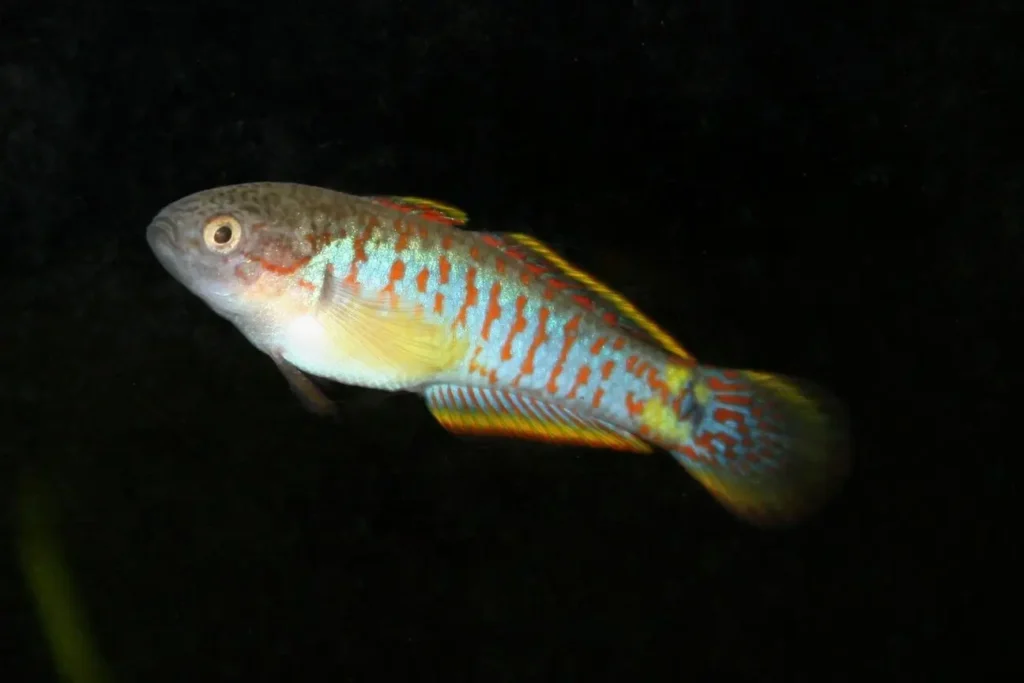
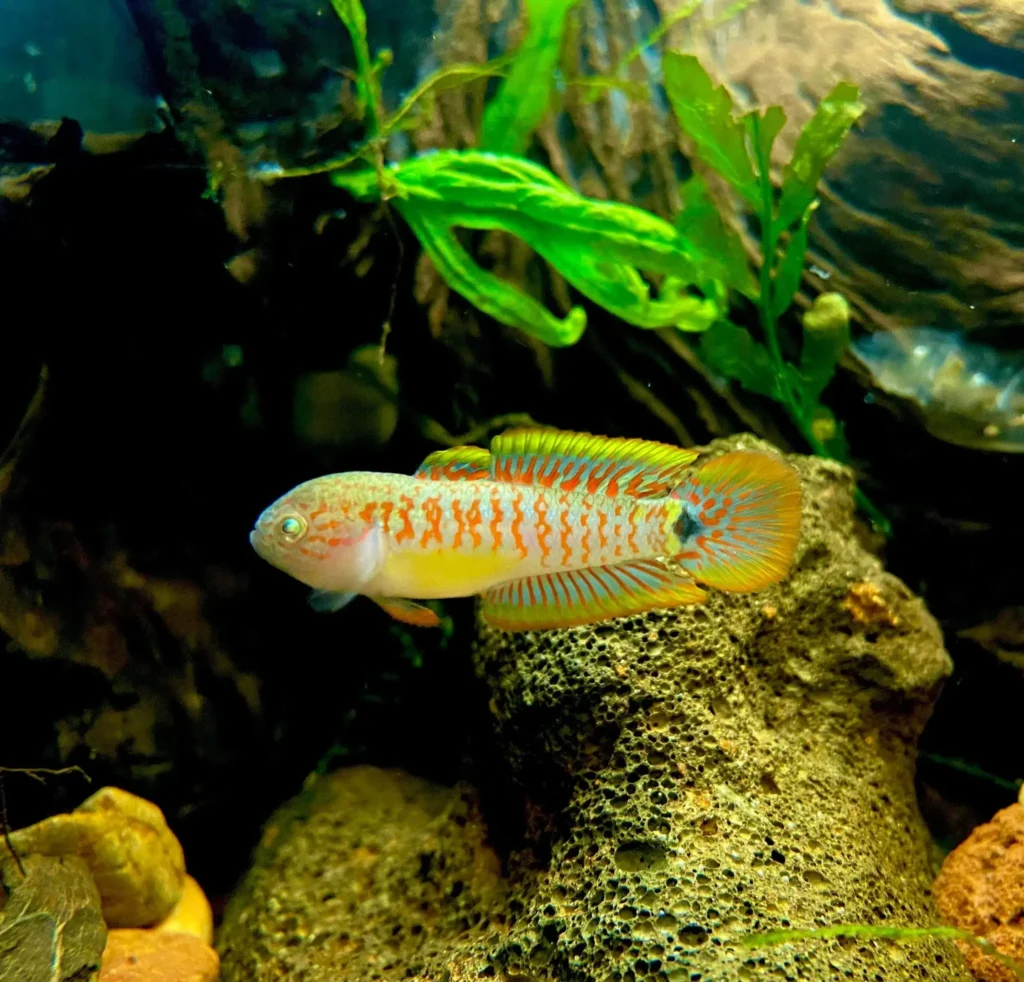
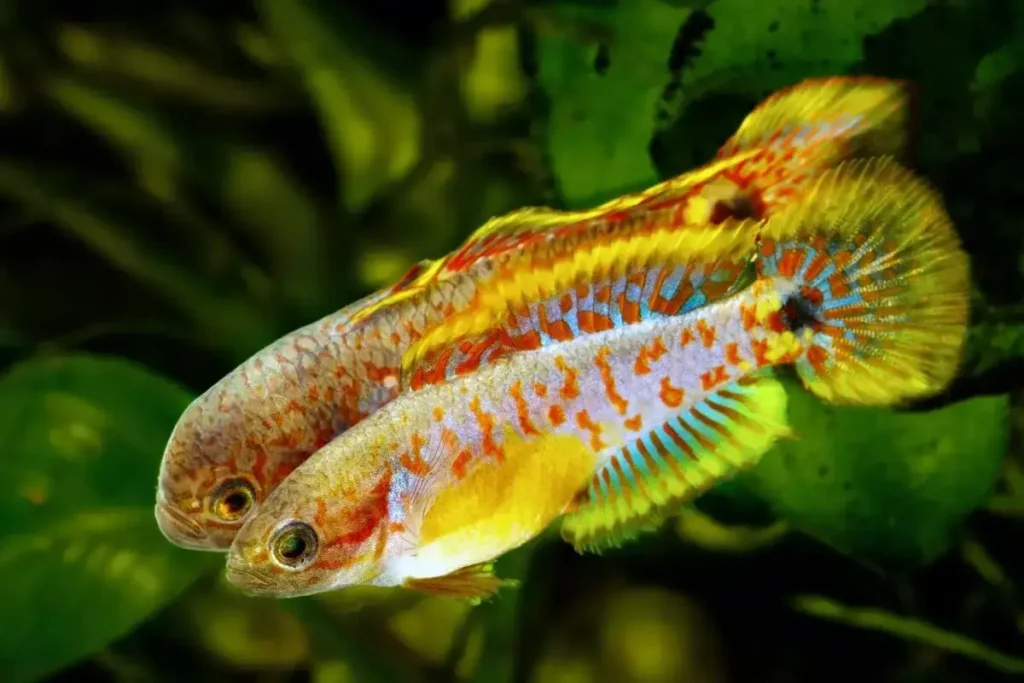
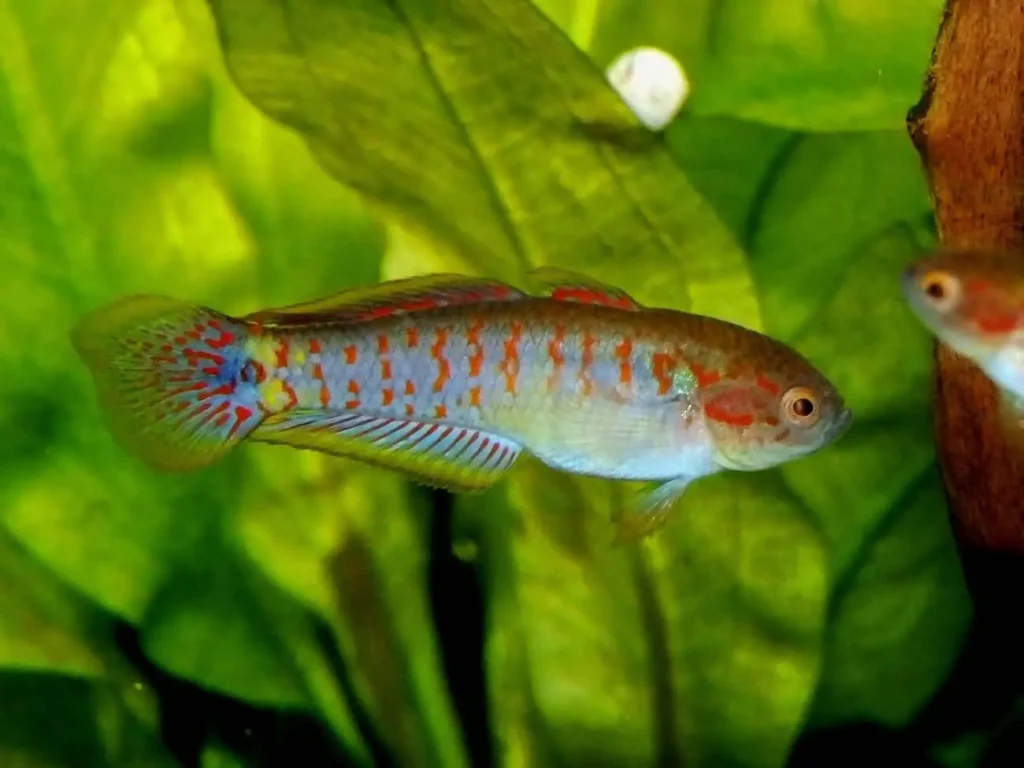
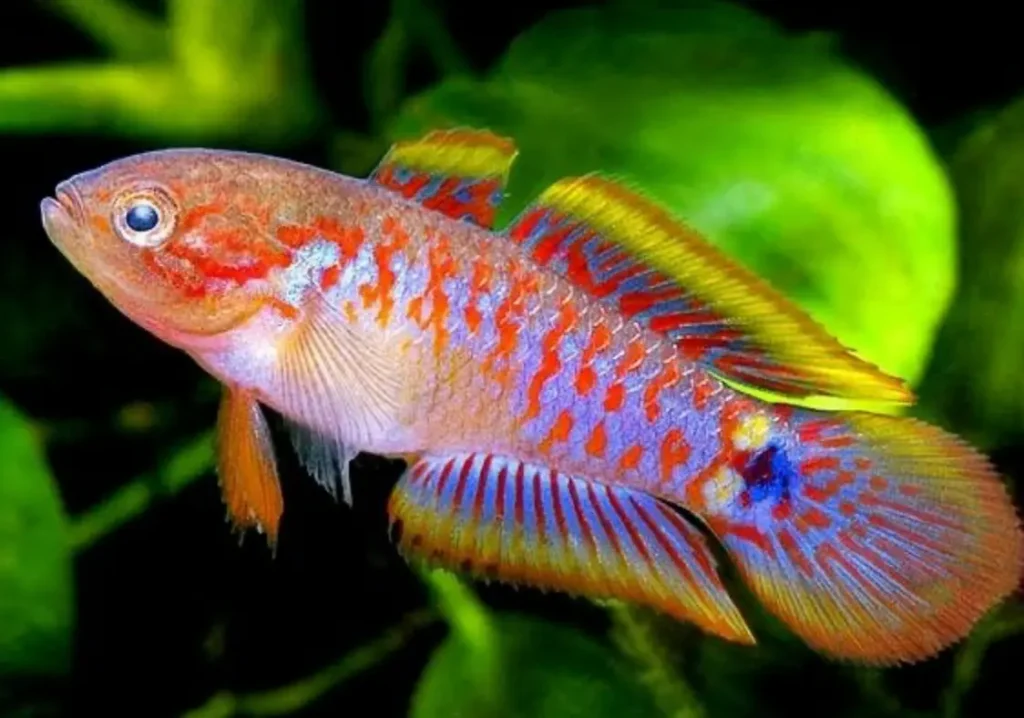
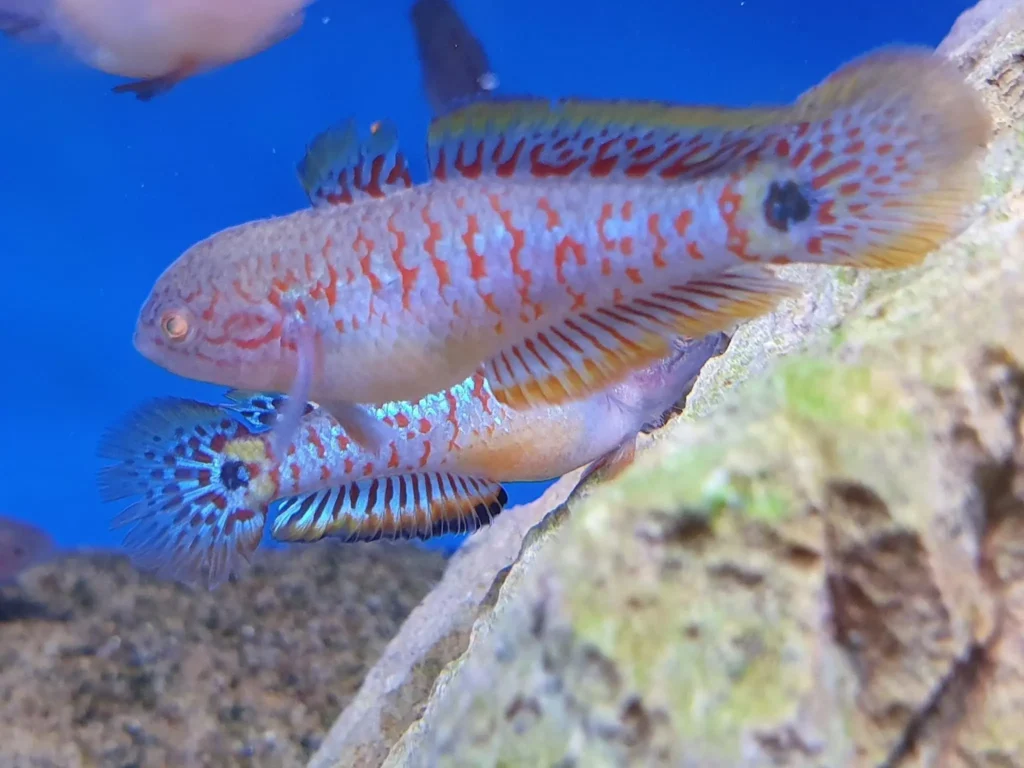
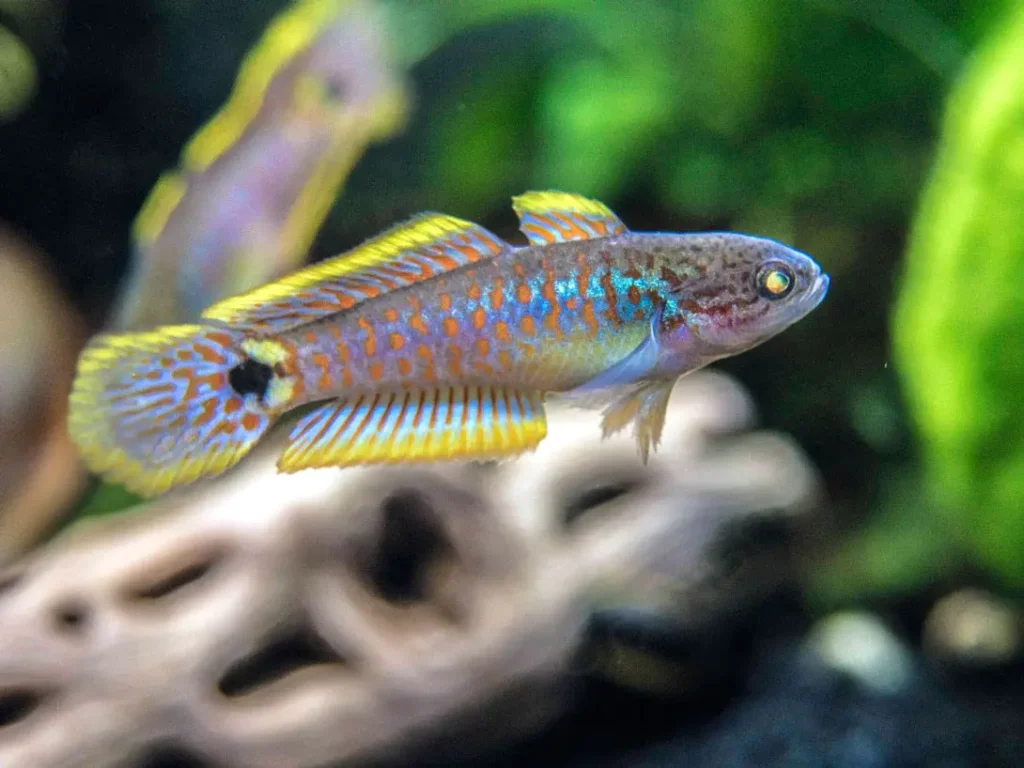
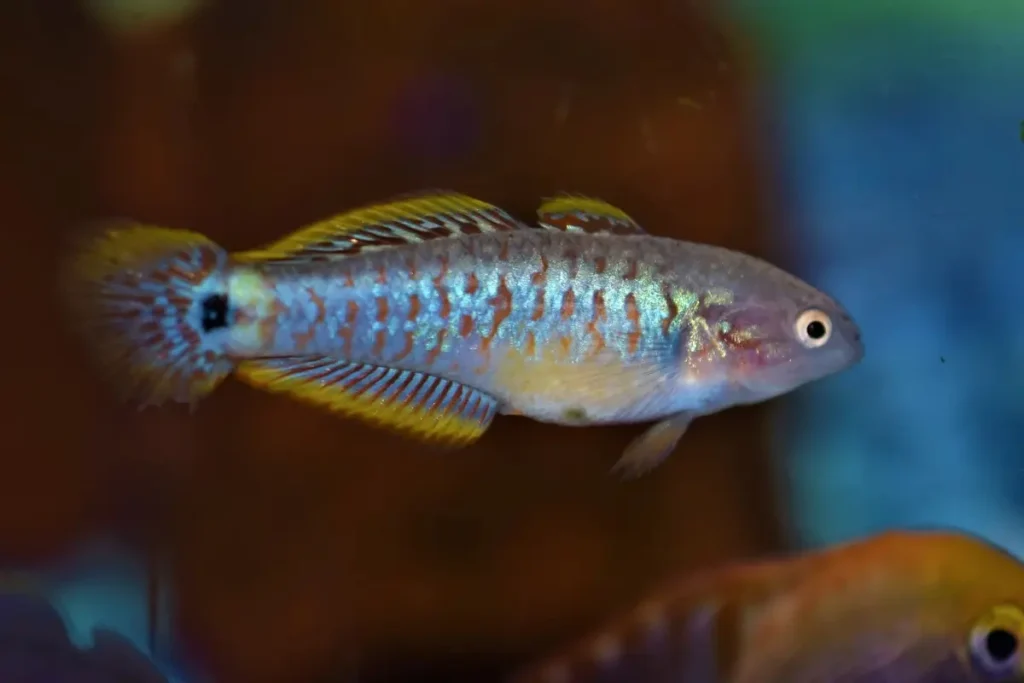
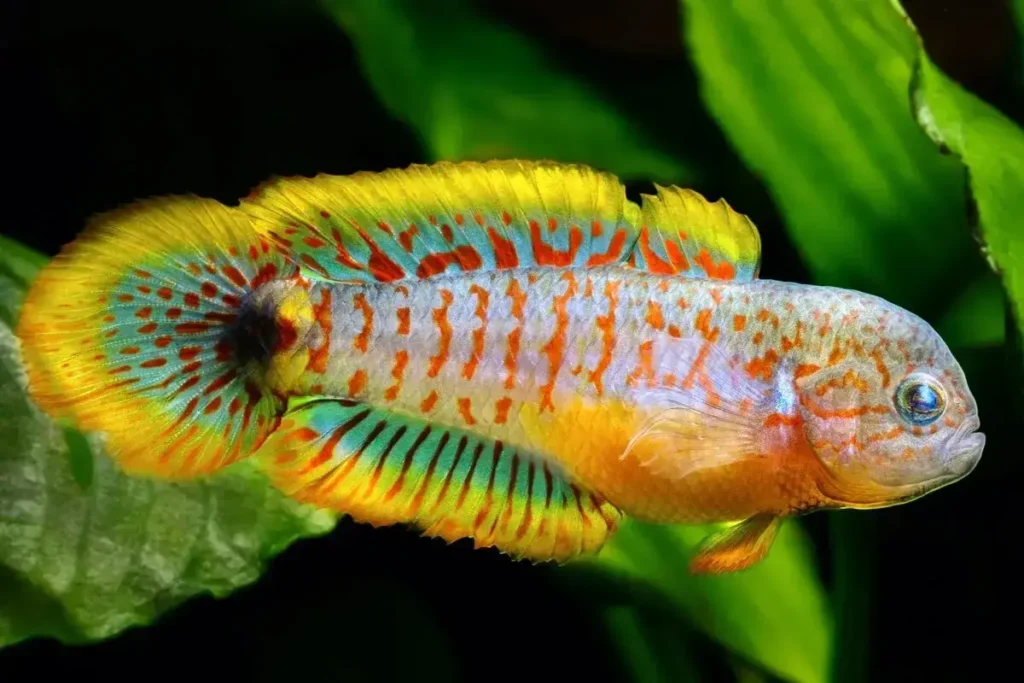
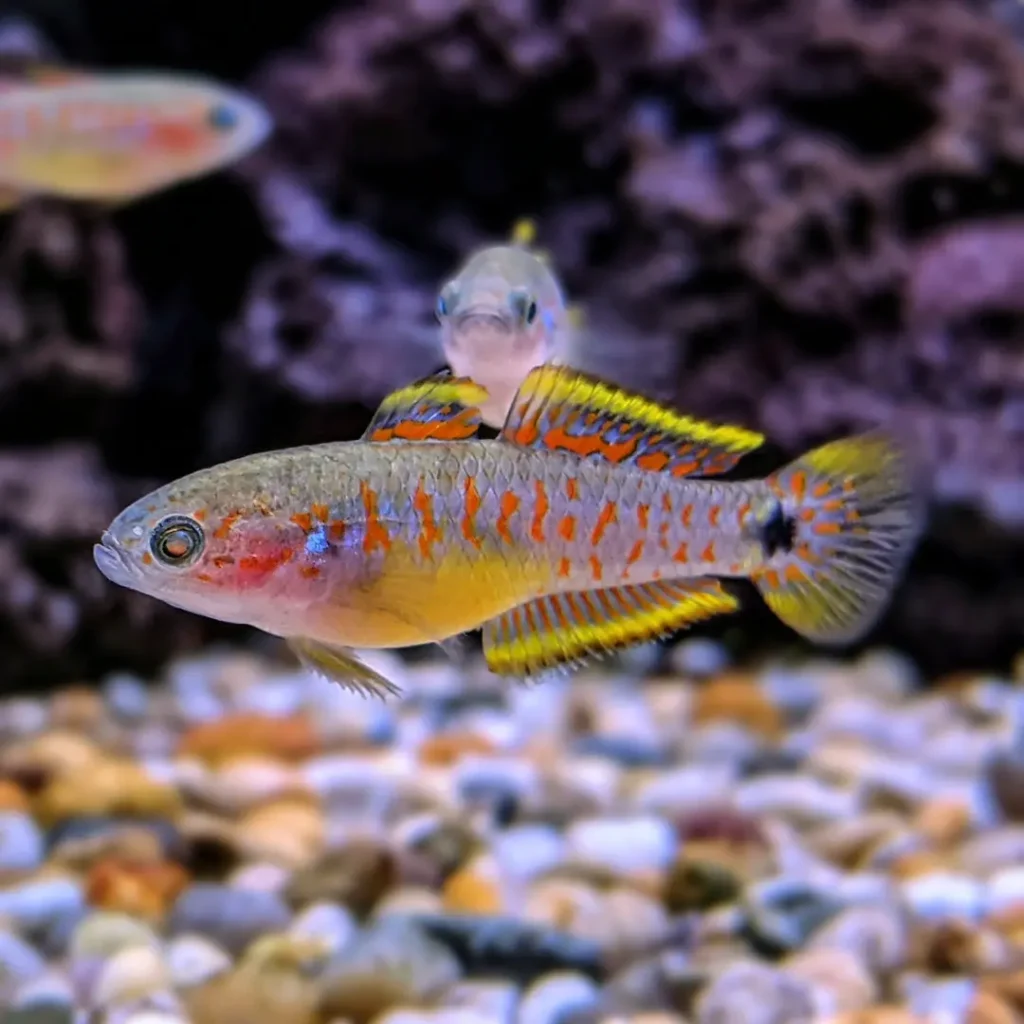
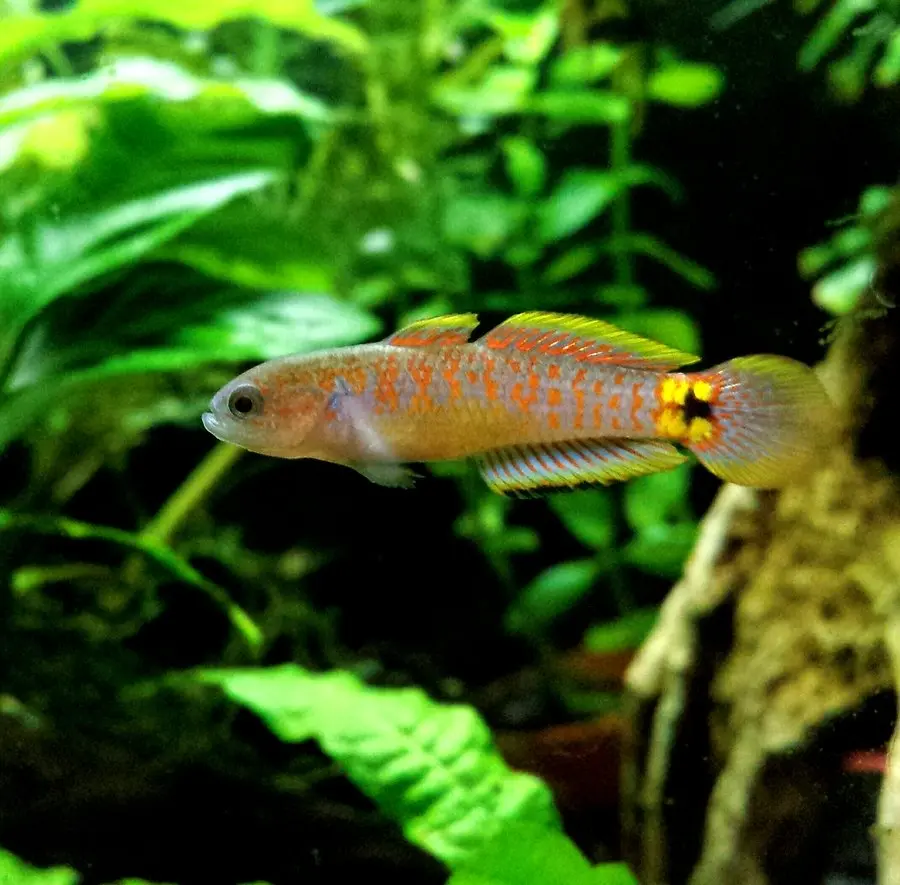
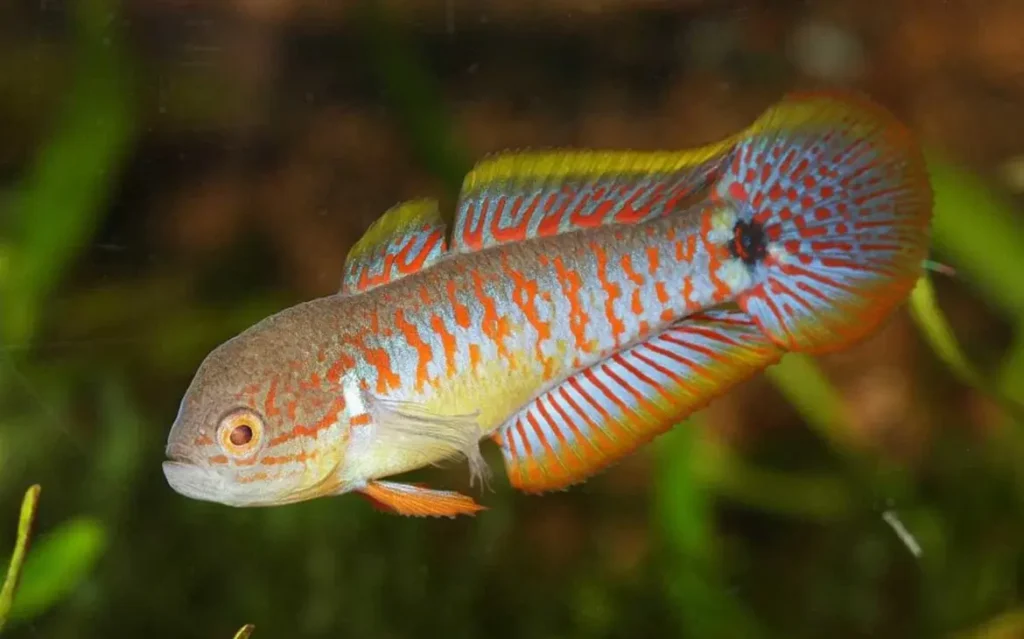
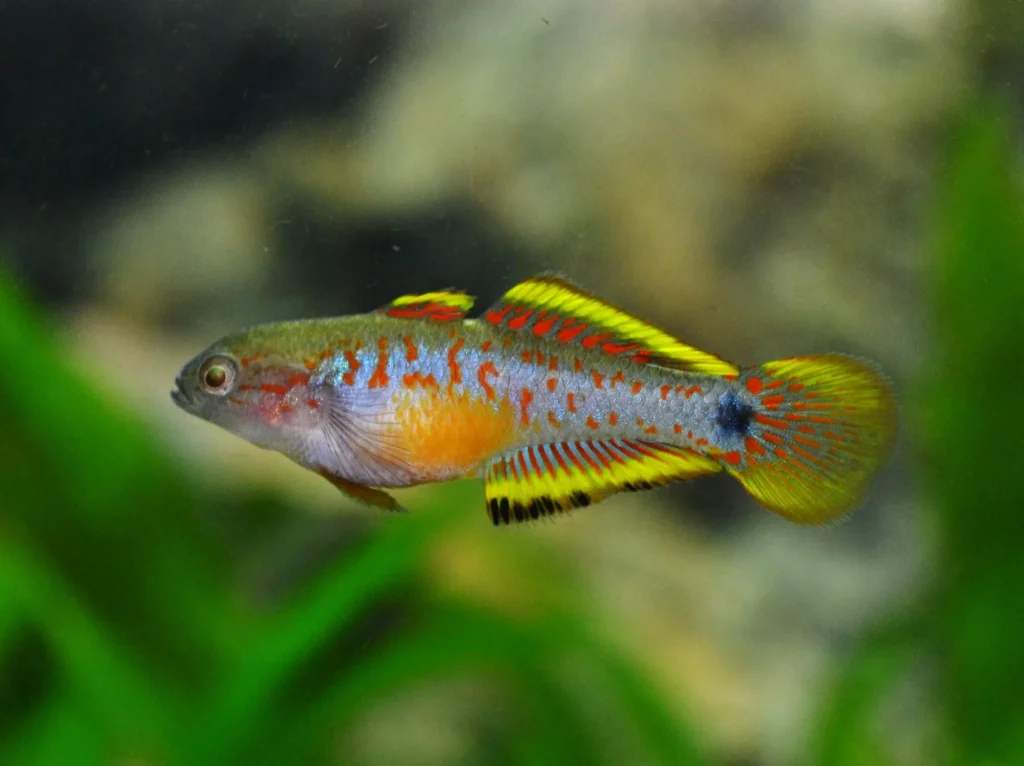
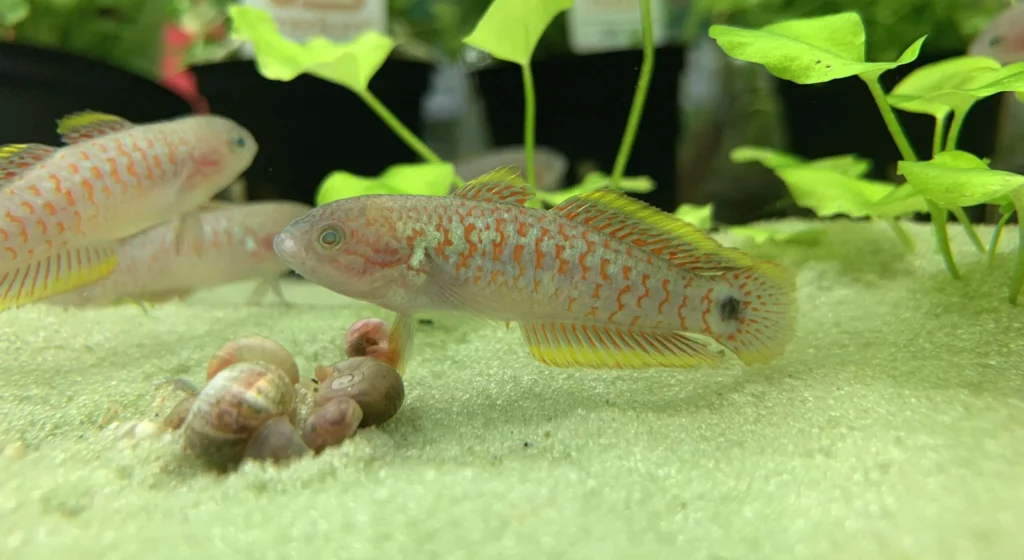
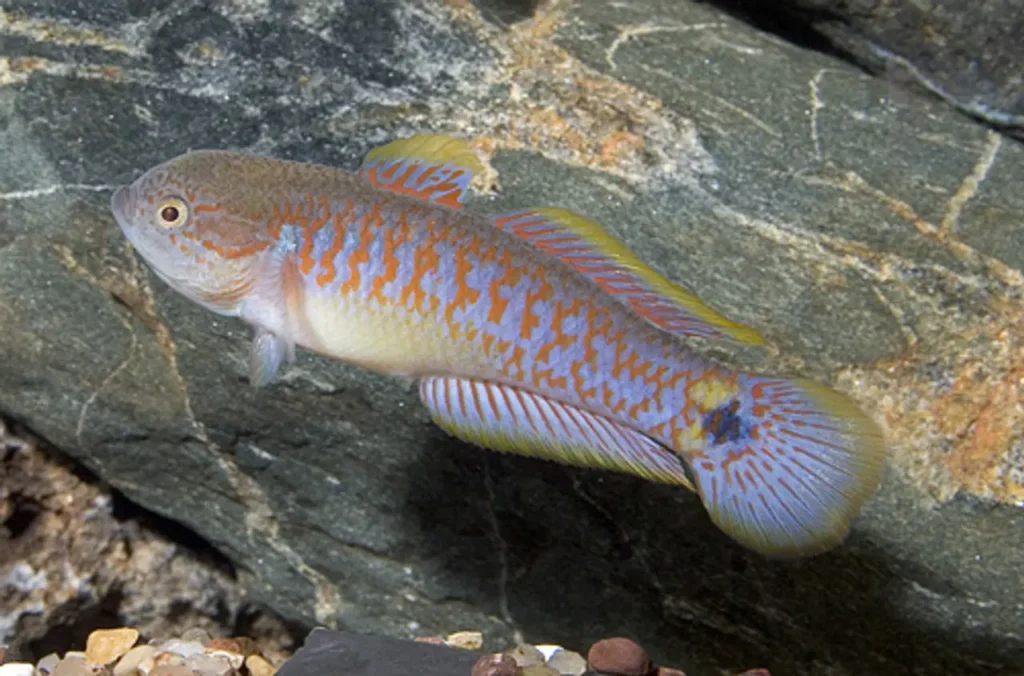
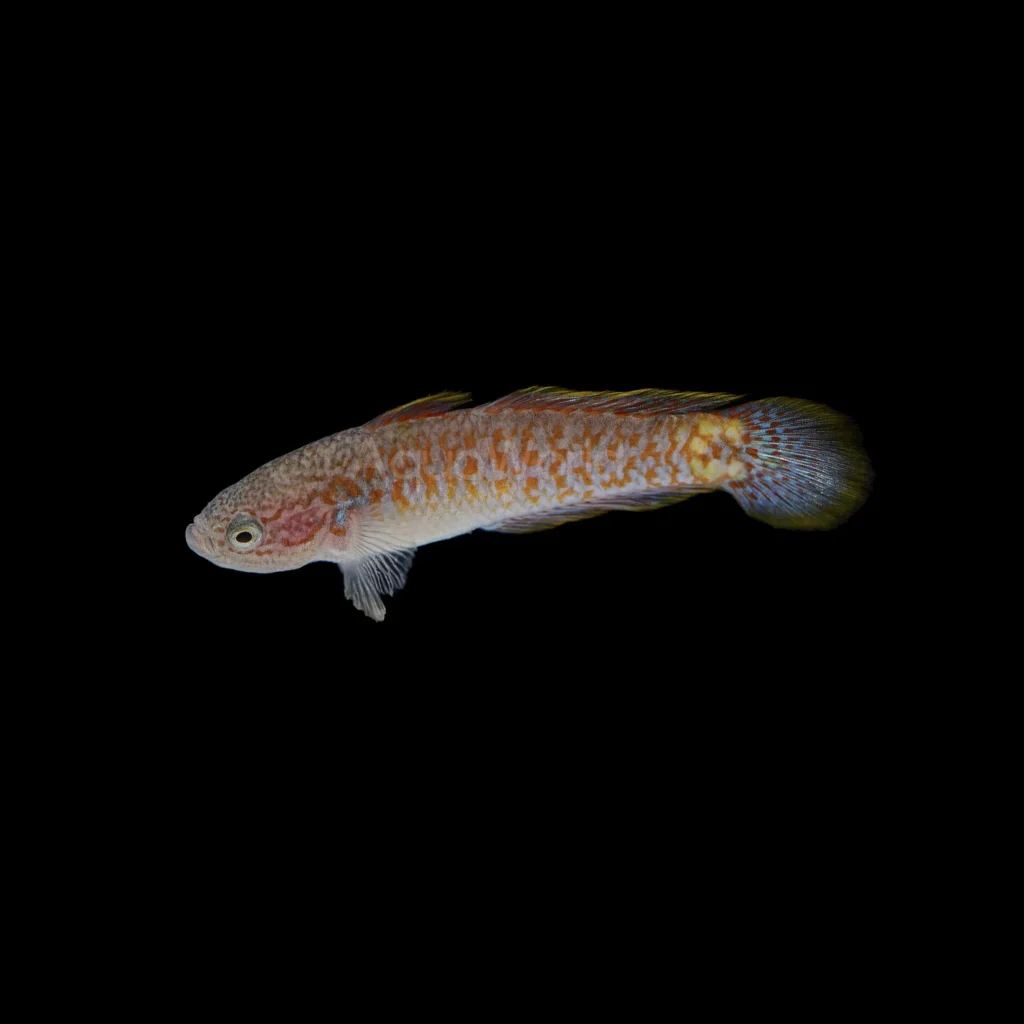
Appearance and Coloration
The Peacock Gudgeon, scientifically known as Tateurndina ocellicauda, is a species native to freshwater habitats in Papua New Guinea. It has a slender body and grows to a size of approximately 5-6 centimeters (2-2.4 inches) in length. The male Peacock Gudgeon boasts vibrant colors, including electric blue, yellow, orange, and black. Its body is adorned with intricate patterns and striking fin extensions, making it a true spectacle of the aquarium. The females, though less colorful, exhibit beautiful shades of yellow and orange.
Habitat and Behavior
Peacock Gudgeons are typically found in slow-moving streams, rivers, and swamps with dense vegetation in their native Papua New Guinea. They prefer calm waters with plenty of hiding places, such as submerged branches, rocks, and plants. In the aquarium, they exhibit peaceful behavior, making them compatible with a variety of tank mates, including other small, non-aggressive fish.
Tank Requirements and Care
When keeping Peacock Gudgeons, it is important to provide a suitable environment that mimics their natural habitat. A well-planted aquarium with soft, sandy substrate and the addition of driftwood or rocks to create hiding places is ideal. They appreciate a water temperature between 24-28 degrees Celsius (75-82 degrees Fahrenheit) and a slightly acidic to neutral pH level.
Feeding and Diet
Peacock Gudgeons are omnivorous and have a diverse diet. In their natural habitat, they feed on small invertebrates, insects, algae, and plant matter. In the aquarium, they readily accept a variety of foods, including high-quality flake or pellet foods supplemented with live or frozen options such as bloodworms, brine shrimp, and daphnia. A varied diet ensures their overall health and vibrant coloration.
Breeding
Breeding Peacock Gudgeons can be a rewarding experience for aquarium enthusiasts. To encourage breeding, provide ample hiding places, such as caves or PVC pipes, in the aquarium. The male will court the female, and after successful courtship, the female will lay eggs in the chosen spawning site. The male then guards and tends to the eggs until they hatch. Once hatched, the fry can be fed finely crushed flakes or powdered foods until they are large enough to consume larger fare.
Aesthetic Value and Enjoyment
Peacock Gudgeons are prized for their striking beauty and peaceful nature, making them popular choices for aquarists. Their vibrant colors and graceful movements create a captivating visual display in the aquarium, bringing a sense of tranquility and beauty to any aquatic setting. Observing their behavior, including courtship displays and interactions with other fish, adds a sense of fascination and joy to the hobby of aquarium keeping.
Conservation Considerations:
While Peacock Gudgeons are readily available in the aquarium trade, it is essential to ensure that they are ethically sourced and not obtained through destructive practices. Supporting sustainable breeding programs and purchasing fish from reputable sources promotes responsible aquarium keeping and helps conserve wild populations of this species.
The Peacock Gudgeon, with its radiant colors, charming behavior, and peaceful nature, is a true jewel in the freshwater aquarium world. Its presence adds a touch of elegance and vibrancy to any aquatic environment, bringing joy to both novice and experienced aquarium enthusiasts alike. By providing proper care and appreciating the beauty of these magnificent fish, we can ensure their continued well-being and conservation for generations to come.
